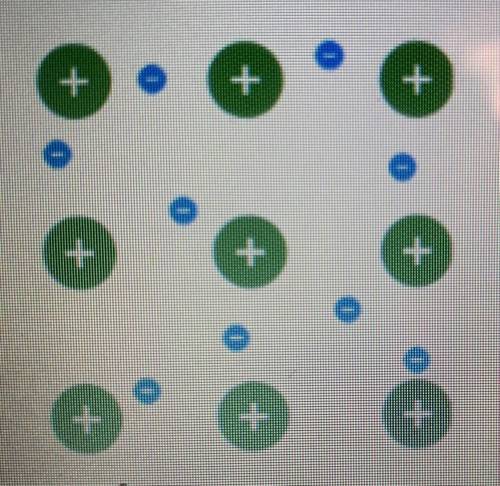Examine the model of a metallic bond.
What do the smaller circles represent?
o the cations h...

Examine the model of a metallic bond.
What do the smaller circles represent?
o the cations held in place by the attractive forces within the sea of electrons
O the delocalized electrons that are free to move around the positive cations
the distinct and rigid bond between the different metal atoms
the unshared pairs of electrons of the metal atoms involved in the metallic bond


Answers: 2


Another question on Chemistry

Chemistry, 21.06.2019 18:00
In a sample of oxygen gas at room temperature, the average kinetic energy of all the balls stays constant. which postulate of kinetic molecular theory best explains how this is possible? a. attractive forces between gas particles are negligible because the particles of an ideal gas are moving so quickly. b. collisions between gas particles are elastic; there is no net gain or loss of kinetic energy. c. gases consist of a large number of small particles, with a lot of space between the particles. d. gas particles are in constant, random motion, and higher kinetic energy means faster movement.
Answers: 1

Chemistry, 22.06.2019 06:00
This flow chart shows the amount of energy that is emitted by each type of light. ultraviolet > blue light > yellow light > red light (maximum energy) (minimum energy) in an experiment, shining which type of light on a strip of metal would be least likely to produce the photoelectric effect? ultraviolet light dim blue light bright red light bright yellow light
Answers: 2

Chemistry, 22.06.2019 08:30
In a chemical reaction at equilibrium, the rate of the forward reaction the rate of the reverse reaction. if the rate of the forward reaction more products are formed.
Answers: 1

Chemistry, 22.06.2019 09:00
What type of energy do chemical bonds have? what type of energy is it converted to during chemical reactions? question 15 options: chemical bonds have kinetic energy, which is converted to potential energy during chemical reactions. chemical bonds have electric energy, which is converted to potential energy during chemical reactions. chemical bonds have heat energy, which is converted to kinetic energy during chemical reactions. chemical bonds have potential energy, which is converted to heat energy during chemical reactions.
Answers: 1
You know the right answer?
Questions

Mathematics, 26.08.2019 17:30

History, 26.08.2019 17:30

Mathematics, 26.08.2019 17:30

Health, 26.08.2019 17:30

Chemistry, 26.08.2019 17:30




Mathematics, 26.08.2019 17:30

Mathematics, 26.08.2019 17:30


Mathematics, 26.08.2019 17:30


Biology, 26.08.2019 17:30




Biology, 26.08.2019 17:30


Mathematics, 26.08.2019 17:30



